Velocity Based Training for Baseball Athletes
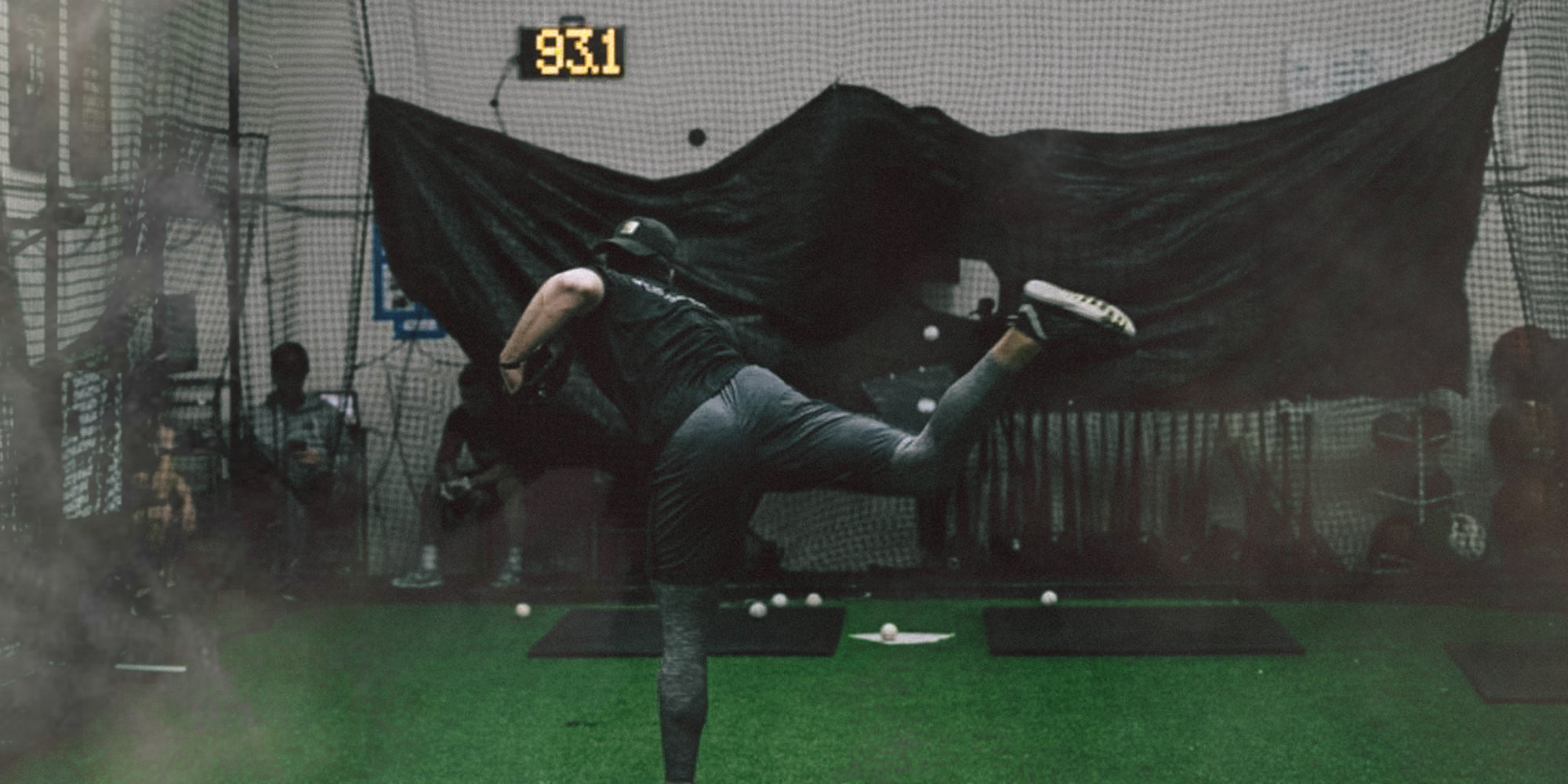
Absolute strength is a crucial stage in an athlete’s development; however, the stimulus will need to change as an athlete gets further into their career. Absolute strength is a great tool for young athletes to develop high force production, neuromuscular efficiency, and lean-body-mass gains. Solely focusing on absolute strength is not the best tool for intermediate and elite level athletes, because after a few years these measurable gains will undoubtedly plateau.
Elite athletes have often adapted to the stimulus of absolute strength, and to keep on pushing for greater strength gains takes away from their work capacity.
The weight room supplements the throwing; it should never take away from the throwing.
As we grappled with how to further enhance athlete performance from the weight room to throwing, Kyle Boddy and I came across Dr. Bryan Mann’s book on Velocity Based Training (VBT). We thought this could be a huge enhancement for some of our more advanced athletes and further push their on-field performance.
(This post was written by Jack Scheideman, High Performance Trainer at Driveline Baseball)
Different Speed Training: Which Velocity Do I Need?
Different speeds train different qualities of the athlete, and to train for maximum performance, choose appropriate velocities. The SAID principle states that the body will adapt to the Specific Adaptation of the Imposed Demands. Based off of what velocity you choose, train the quality that is designated with that specific velocity.
For example, training for starting strength has minimal carryover for absolute strength, because you are training the opposite quality. Choosing the correct velocity based off of training age is crucial for an athlete’s success. If you don’t, you will not be training the athlete in an appropriate way for his maximum development.
Let’s break these strengths down.
Absolute Strength
Absolute strength is defined as moving the heaviest weight that the athlete can move one time, or his 1RM. This speed usually occurs in the .13-.35 m/sec, depending on the athlete’s qualities. Absolute strength is the fundamental quality for all the other strength and speed qualities that follow. Absolute strength needs to be the first quality that a young athlete trains, as it can have huge carryover.
The athlete, by training absolute strength, is attempting to train to produce more maximal force.
This is crucial since the athlete needs to be able to produce a lot of force to be successful. However, there will be a time in an athlete’s career when absolute strength will not have minimal transfer to his performance.
Transfer of training showing different correlations of exercises to throwing distance.
Based on the table above. an elite-level shot putter could be considered to throw 19+ meters; shot putters also need a much higher level of absolute strength then baseball pitchers. This is because a shot put weighs 16 pounds and moves at a much slower velocity than a baseball. As you can see, a 1rm back squat had very little transfer as the athlete became elite. Once a sufficient level of absolute strength is acquired, the athlete needs to train other aspects of the force-velocity curve.
Circa-Max Strength
Submaximal training is when the athlete is near a max of .35-.45 m/sec. These reps are difficult, but the athlete is not in danger of failing a rep. These are usually done in the 2-3 rep range, where the athlete is training to improve his absolute strength. Circa-max phases are crucial to improving the athlete’s absolute strength, as absolute strength work can not be trained very frequently. Going for maximal weights is very taxing on the central nervous system, so the majority of the work is done in the circa-max velocities. This has a carryover to your absolute strength, because they are in similar velocities zones.
Acceleration Strength
Velocities of acceleration strength are in the .5-.75 m/sec, which constitutes a relatively heavy weight that an athlete is still able to accelerate. The weight will be heavy but not too close to absolute strength since the bar will never slow down or stop, as in absolute strength. Bryan Mann gives a great example of a defensive lineman in football. When they accelerate at the snap, they move at 1.5 m/sec as they make contact and dominate the offensive lineman they accelerate through them at 0.6 m/sec. This case only happens if the defensive lineman is able to dominate the offensive lineman; if they don’t dominate them, it turns into an absolute strength quality.
Strength-Speed
The quality of strength-speed occurs when the bar is moving from .75 to 1 m/sec, and it is classified by strength in the condition of speed. It is moving a moderate load at maximal speeds, in which the bar constantly accelerates through the concentric movement. Because of this, it has a higher rate of force development. This is where most, if not all, dynamic effort days fall into. This is because strength-speed is highly transferable to both producing more force and being able to produce that force faster. It lies in the middle of our force velocity curve, so it is inherently the first speed we select with a new athlete starting a VBT program. Once that athlete has already trained for absolute strength, the methods of circa-max strength and acceleration strength can come into play.
Speed-Strength
The quality of speed-strength is achieved when the bar velocity is moving between 1-1.3 m/sec, and it is classified by speed in the condition of strength. It uses lighter weights than strength-speed which increases bar velocity. It has the second-highest rate of force development behind starting-strength. Usually to create this speed, you have to use some type of accommodating resistance—either bands, chains or weight releasers. This allows the athlete to have less weight at the bottom in order to accelerate the bar from the start of the concentric movement. As the bar is accelerated, the athlete is able to maintain the velocity as it accelerates through the accommodating resistance.
Starting Strength
Starting strength is achieved when the athlete is able to accelerate the implement greater than 1.5 m/sec, which is the ability to overcome inertia from a dead stop. This makes it the highest rate of force development possible. Many elements in athletics require this velocity range when throwing a hammer, baseball, or swinging a bat. It is also one of the hardest elements to train in a weight room: because of the speed required, the weight needs to be extremely light. This speed is mainly neurologically based and usually inappropriate to train in the weight room. Rather, most athletes would benefit from speed-strength or strength-speed since these qualities produce more power. Most athletes will train the quality of starting-strength through their competitive event, either throwing different weighted balls or different weighted bats. We choose not to train it in the weight room because athletes get this work in through sport specific exercises.
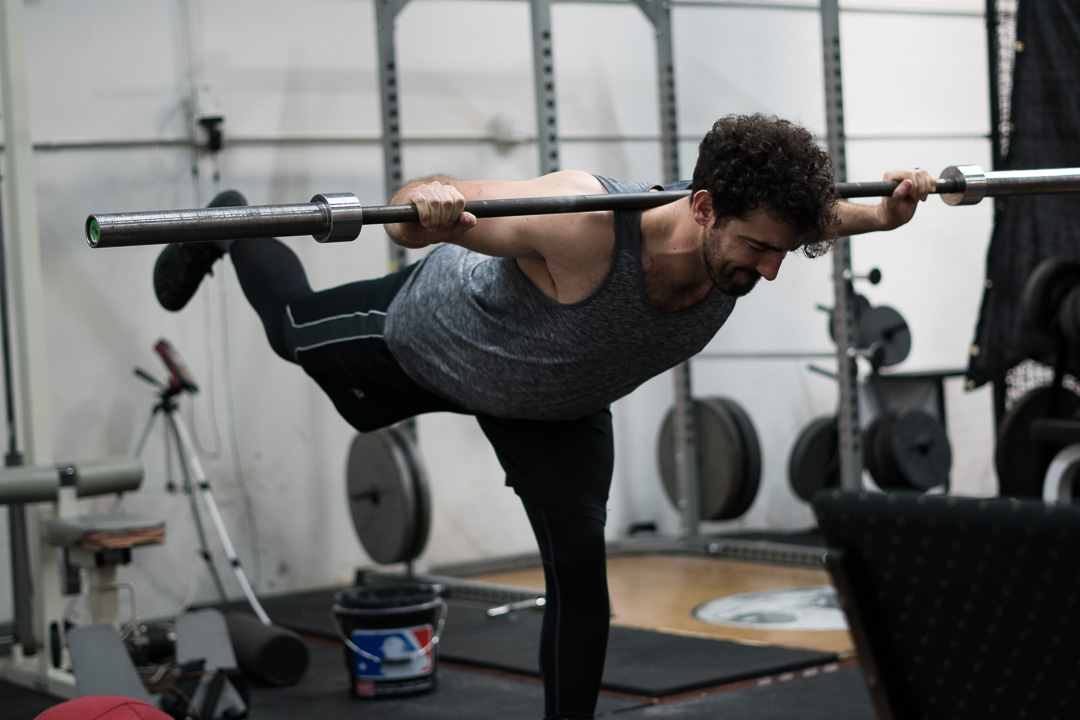
What is Velocity Based Training (VBT) & How We Measure It
We are currently measuring speed and power of the lifts with a Tendo Power Analyzer. This gives us average velocity and power, peak power and velocity, and eccentric velocity measurements that we can use to track our athletes. We are able to connect it to your computer with a Bluetooth™ device and track the progression of the athletes as they go through a cycle. There are many other, cheaper velocity-tracking devices such as GymAware, PUSH band, or Beast Sensor, and we are currently testing their validity.
Velocity-based training (VBT) allows athletes to pick weights based off the speed quality that the athlete is attempting to train at—we will go into these qualities later. This system replaces a percentage-based system where the weights are pre-selected.
The athlete warms up with the Tendo unit connected to the bar and picks the weights based off the speed. During the session, if the athlete goes below or above the selected speed, adjustments are made with the weight to make sure we are training the correct velocity quality.
VBT is a constant adjustment based off of how the athlete is performing that day, whereas a percentage-based system can’t make adjustments from objective data.
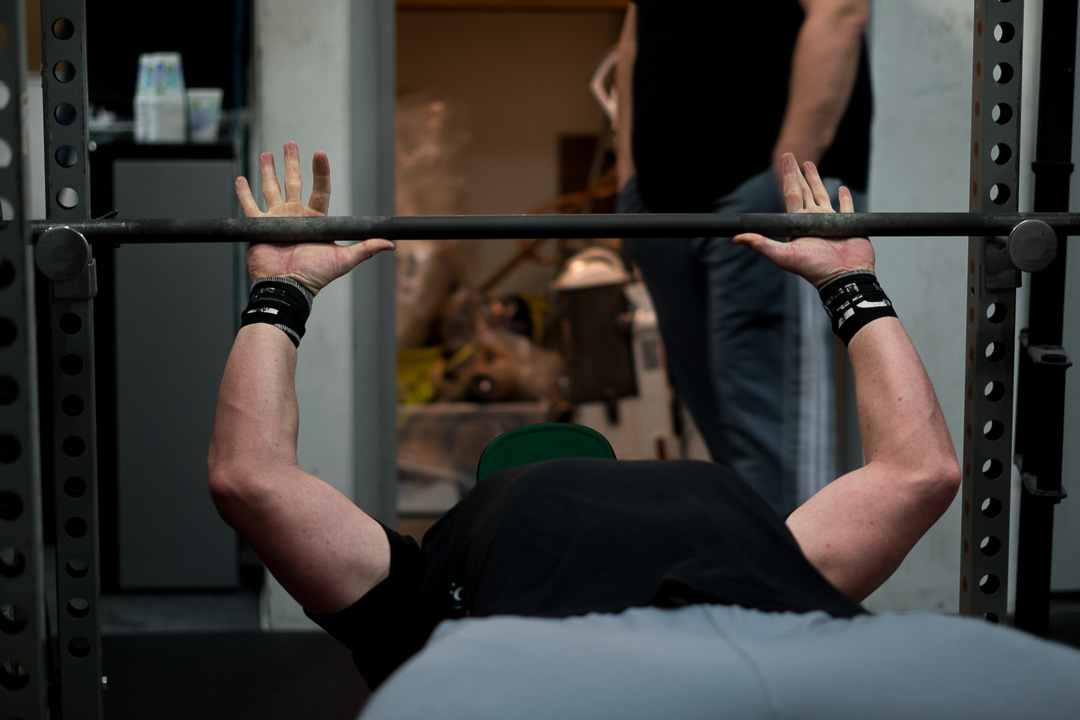
Where Percentage Based Training Goes Wrong
There are three main areas where using velocity-based training yields better results than percentage-based training.
1. Accuracy: Percentages are inherently based off speed; intensity is directly correlated to the mean concentric speed of the lift. But using VBT allows us to pick more appropriate weights on our dynamic effort days. Now each day an athlete trains using VBT with a Tendo power analyzer, the athlete is training using the section of the force continuum that we have programmed.
2. Daily fluctuations: The reason that percentage-based training is not as accurate is because there are daily fluctuations in an athlete’s one-rep max (1RM). This is because our nervous system has daily fluctuations due to overtraining, nutrition, lifestyle, and a number of other factors. Using VBT allows us to get an idea of how these stressors affect an athlete, because they will show up in their readings. You are not able to lift your max every day. So, if you base your percentages off of one-rep maximum, estimations of that day’s maximum capacity will be less accurate than testing velocity of the barbell and the selected weights for the session.
3: Risk: There are two reasons that percentage-based training can be risky: First, your percentages fluctuate everyday. So if you select 90% of 1RM, and your 1RM that day is actually 95% of your assumed 1RM, you are much more likely to break down in technique and can be easily overtrained.
1RM testing can also be very risky for young athletes who do not have consistent technique on the lift. This can easily lead to injury. So, if you don’t test it, then you can’t choose appropriate weights on dynamic-effort day. Remember the weight-room supplemental training that athletes are already doing on the throwing side.
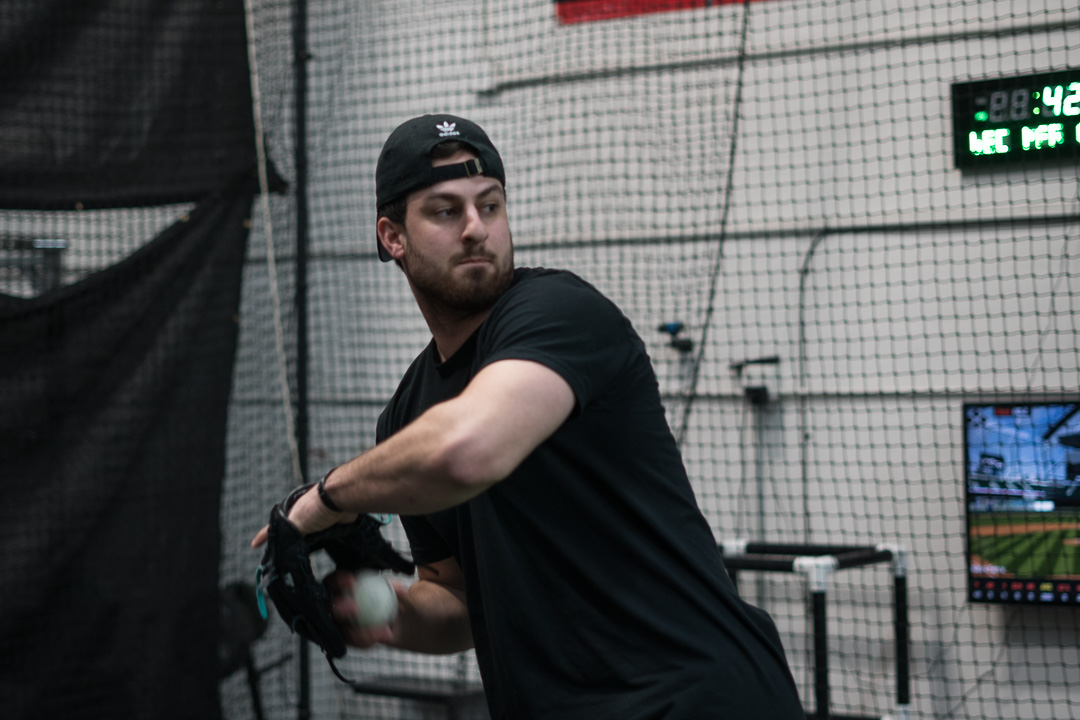
Where We Started: Dynamic Effort Days and Westside Barbell
Dynamic effort is defined as moving a sub-maximal load at maximal speed. This is usually paired on a different maximal-effort day where you work above 90% of 1rm or 0.15-.35 m/sec. The Westside program is set up in a lower/upper split, where either the upper or lower body is the focus that day.
For example, Monday: max effort upper; Wednesday: dynamic effort lower; Thursday: dynamic effort upper; Saturday: max effort lower. Popularized by Westside Barbell and Louie Simmons, this style continues to drive maximal strength but also works different qualities of the force-velocity curve to improve rate-of-force development.
We had already been programming based on a Westside template before we got the Tendo Power Analyzer by using velocities to train velocity qualities. Athletes were using a progression of 1RM on dynamic-effort day.
For a back squat, for example, the athletes were doing eight sets of two reps on week: 40% of one rep max; week two: 45% of one rep max; week three: 50% of one rep max; and then a new cycle would begin. On the maximal-effort days, athletes were working to above 90% of 1RM for doubles or triples based off of the cycle.
At the time we were seeing athletes getting much stronger but not necessarily throwing much harder; it wasn’t translating to their performance as we would have liked.
We thought this may have been happening because of two main reasons:
- Athletes were spending too much energy in the weight room, which took away from their throwing.
- There was too much of a focus on maximal strength and not as much on other qualities, such as working on the force-velocity curve to enhance performance.
While the Westside template has been proven to produce great results in the powerlifting community, it doesn’t necessarily transfer to pitchers who also have an aggressive throwing program or do not currently have reasonable strength levels.
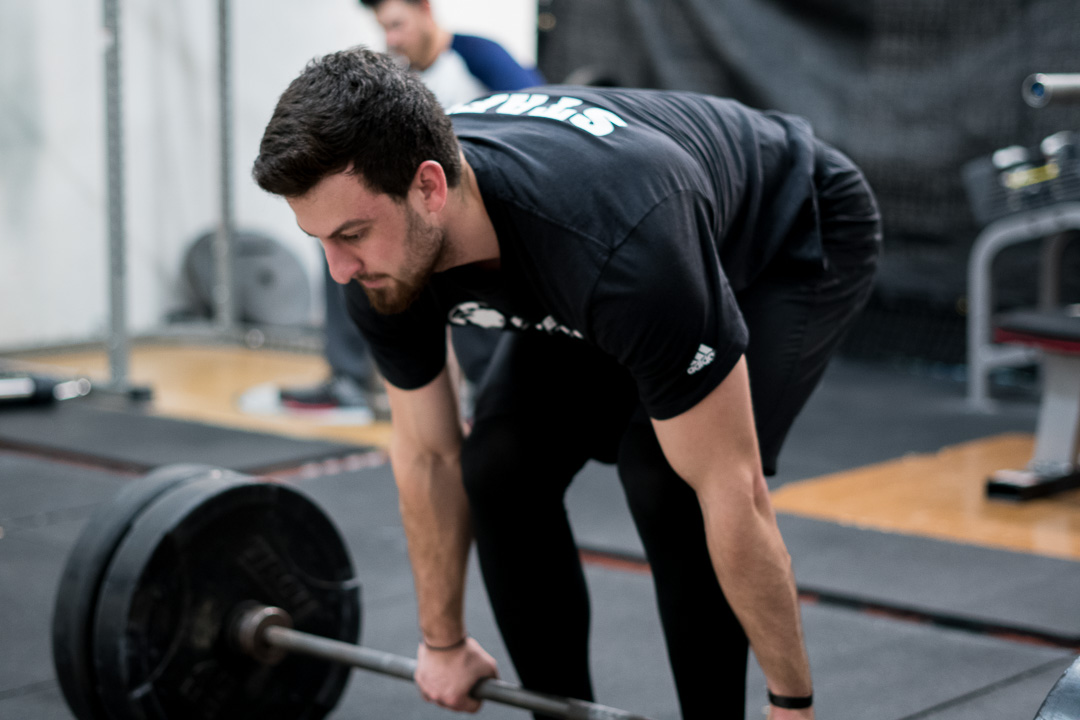
Athletes can become good at many things, but not everything. There needs to be a focus in each cycle: if throwing volume or intensity goes up for an athlete, something needs to be taken out, and this will usually come from the weight room. After analyzing an athlete’s performance, we evolved into using VBT to maximize performance on the field.
[clickToTweet tweet=”If throwing volume or intensity goes up, activities in the weight room must be taken out.” quote=”If throwing volume or intensity goes up, activities in the weight room must be taken out.”]
How We Use VBT Today
Autoregulation
Autoregulation, with VBT, is a way of monitoring athletes’ workloads by monitoring the velocities of their lifts. These velocities should be monitored during workouts, and from workout to workout, to make sure overtraining does not occur.
During workouts, we select a weight based off of the speed for that day—let’s say 0.8-0.9 m/sec, which is considered a strength-speed day based on the chart above. The workout officially starts after the athlete has added enough weight to reach the chosen speed. The athlete does a maximum of 12 sets of 2 reps on the minute, or until he drops below the designated speed—whichever comes first. Once one of those occurs, the athlete’s workout will then be over. This makes sure that the athlete is only working the speed trait that we want (see table above) and that the athlete does not become overtrained. This is a great way to monitor workload especially when participating in a high-intensity throwing program.
Based off of the data that you have been tracking, you are able to monitor athletes from workout to workout. For example, if last week the athlete is moving the bar at .8 m/sec with 225 and this week he is moving 225 at .6 m/sec, you can see the athlete is clearly not recovering and adapting from last week’s work. You can end the workout there because clearly overtraining has occurred, or you can go for a lighter weight at 0.8 m/sec than last week. From there you can look through workout logs and see if he was not ready for VBT or there was too much volume and/or intensity. This can also lead to a great discussion with the athlete about lifestyle choices and how to set up for the best recovery.
If the athlete has two reps, one at .78 and one at .81, then the workout will continue if the target velocity was .8-.9. The athlete needs to have two consecutive reps below 90% of 0.8 for the workout to end. The athlete would then end his workout if there were two reps below 0.72 m/sec. Some reps can just be a bad technically, so we want to see that athlete has two bad technical reps for the workout to end.
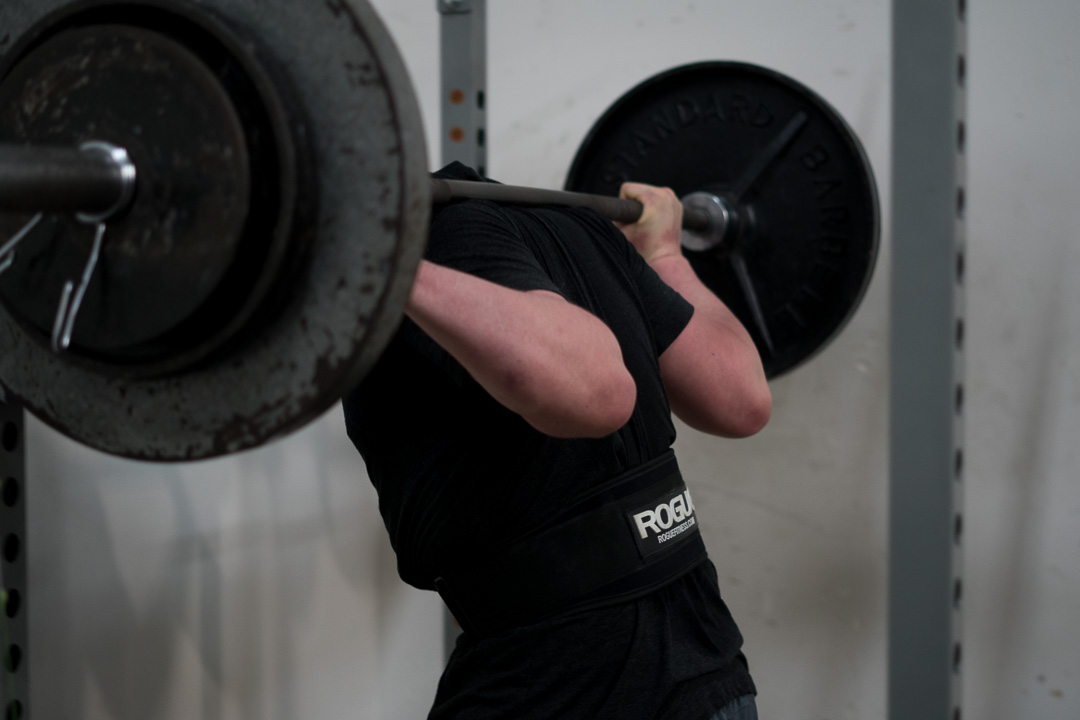
External Cue vs External Focus/Competition
External cues for an athlete are powerful tools that can either enhance technique, with proper cueing, or hurt technique. These cues during a lift can be “knees out,” “sit back” on a back squat, or “tuck your elbows” on a bench press. These are important cues for novice athletes who need to learn the proper movement patterns to maximize their lifting progress. Once athletes have been lifting for years, these cues are still important, but to continue to progress in the weight room, other cues can have a greater effect.
An external focus/competition is greater for the intermediate/elite athlete and is where the Tendo Power Analyzer has been great tool for our athletes. By positioning the Tendo screen where the athlete can see the velocity, the athlete gets immediate feedback on whether the rep was successful or not. By doing this, he gets an external-focused cue, and by doing so, he might change his technique or mindset to maximize his performance.
This is very similar to having radar boards all over Driveline: athletes will change their technique based off of the external focus without being force fed external cues. This allows athletes to learn how to move in their best way to maximize their performance.
By having this external focus, the athlete has constant competition with himself and other athletes to move more weight faster. This creates a culture in the weight room where when athletes get to work, they have to push themselves, because the numbers won’t lie. Competition with other athletes is also important. By pairing up athletes with similar strength levels, they can compete with each other in order to maximize their performance.
With these objective measurements with the Tendo, the athlete is able to analyze the workout and decide whether it was successful or not:
- Did I move more weight faster then last week?
- Did I move more weight at the same speed?
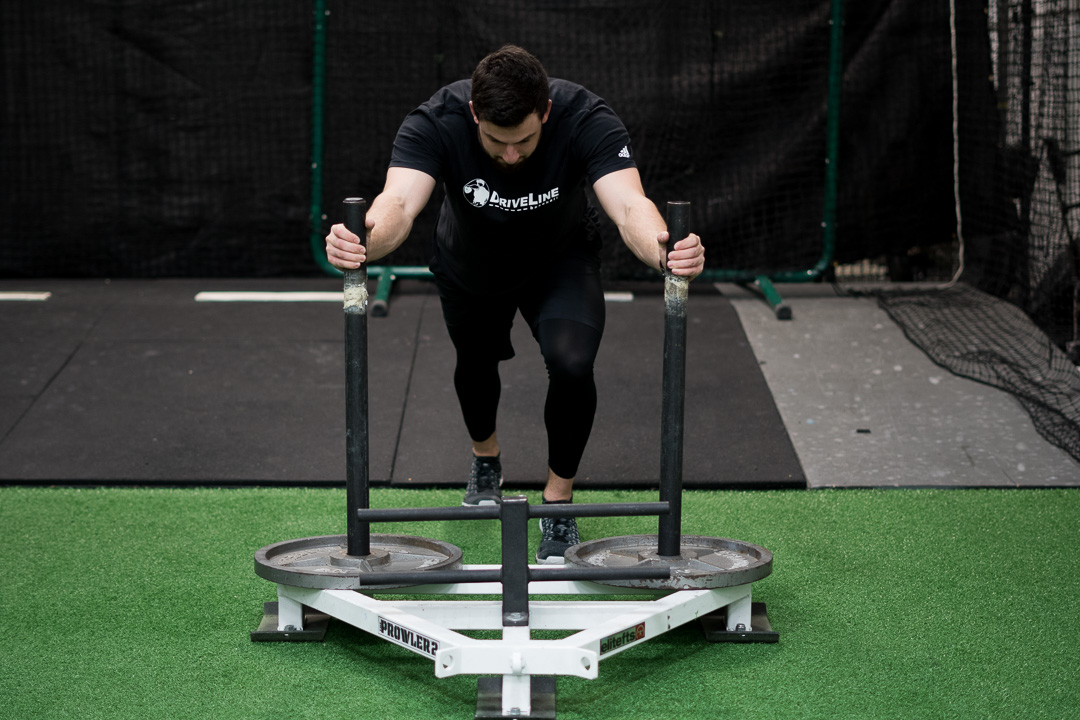
These questions now have objective numbers where the athlete can ask himself these questions and have answer to them. This creates constant progression between the coach and athlete. If they are not progressing, it is the coach’s job to take a step back and first look at the program to see if it is inappropriate. Then the coach can look at the athlete’s lifestyle, etc, and adjust the program based off of the athlete’s specific needs. These objective measurements allow the coach and athlete to constantly analyze performance.
Why It Matters for Baseball
The novice athlete does not need to focus on rate of force development because absolute strength in a novice athlete takes care of this. The novice athlete will not have the strength or technique to move a heavy enough weight at a fast velocity. Think of a young, untrained athlete: when his absolute strength increases and his lean body mass increases, his speed will usually increase.
You are likely to see a novice athlete improve his broad jump, 60 yard dash, throwing velocity, and bat speed through just training absolute strength. However as we have seen with Dr. Bondarchuk’s table (see above), once they become elite, absolute strength will have very little transfer to the athletes. This is where VBT comes into play.
Think about a large semi truck vs. a Ferrari: a semi produces lots of power but does so very slowly; a Ferrari produces less power but is able to apply a high percentage of its force rapidly. Our goal is to help athletes be like a semi in their novice years to become able to produce a lot of force. Then, they transition into becoming like a Ferrari, where we are able to take that large amount of force and train to produce it rapidly. If you train like a Ferrari too early, you still won’t produce a lot of force, so it doesn’t matter how fast you can apply it.
Once an athlete has a good base of absolute strength, it is now time to work on his rate-of-force development. Rate of force development is a measure of explosive strength, or how fast an athlete is able to produce force. These adaptations occur because the athlete improves his stretch-shortening cycle by improving his neural drive, or muscle fiber type, or muscle fiber area. Athletes with higher rate-of-force development have been shown to have more success in athletics because they are able to produce more power. Athletes with more power production are more likely to throw harder or swing a bat faster.
As you can see in the graph above, if you are able to train rate-of-force development the force velocity curve will go up and to the left. This means that the athlete is able to produce more force faster (source).
When an athlete first steps into Driveline, absolute strength will always be the first goal. If they have not already achieved this, then they will transfer into a VBT program to work on rate-of-force development.
The graph above shows that through proper strength and power training, the athlete will improve his force-velocity curve at a greater rate than an athlete just training for speed. By implementing a VBT program, the athlete will continue to improve his absolute strength but also improve his rate-of-force development. This allows the athlete to produce the most power possible.
This is accomplished by working in the correct velocity zones we talked about earlier in order to maximize power production. When athletes first enter our VBT program, they will stay within three velocity ranges: absolute strength, strength-speed, and speed-strength.
Absolute strength is in the program so that we can continue increase their 1RM. This is so that their speed-strength and strength-speed will continue to increase. If an athlete’s 1rm stays the same, he will plateau fairly quickly with speed-strength and strength-speed because the athlete will not be able to move 80% of 1RM in the strength-speed velocity.
We use strength-speed on our major three lifts: Deadlift, Back Squat, and Bench Press. When an athlete first starts, we mainly stay with the strength-speed velocities because they are able to produce more power with these speeds. This is because their speed-strength would be too light of weight on any lift to have high-power production. As we progress we will add in speed-strength to the big three lifts by mainly using accommodating resistance bands/chains. While we have used a trap bar jump for speed-strength when an athlete first jumps in VBT, our main focus is strength-speed.
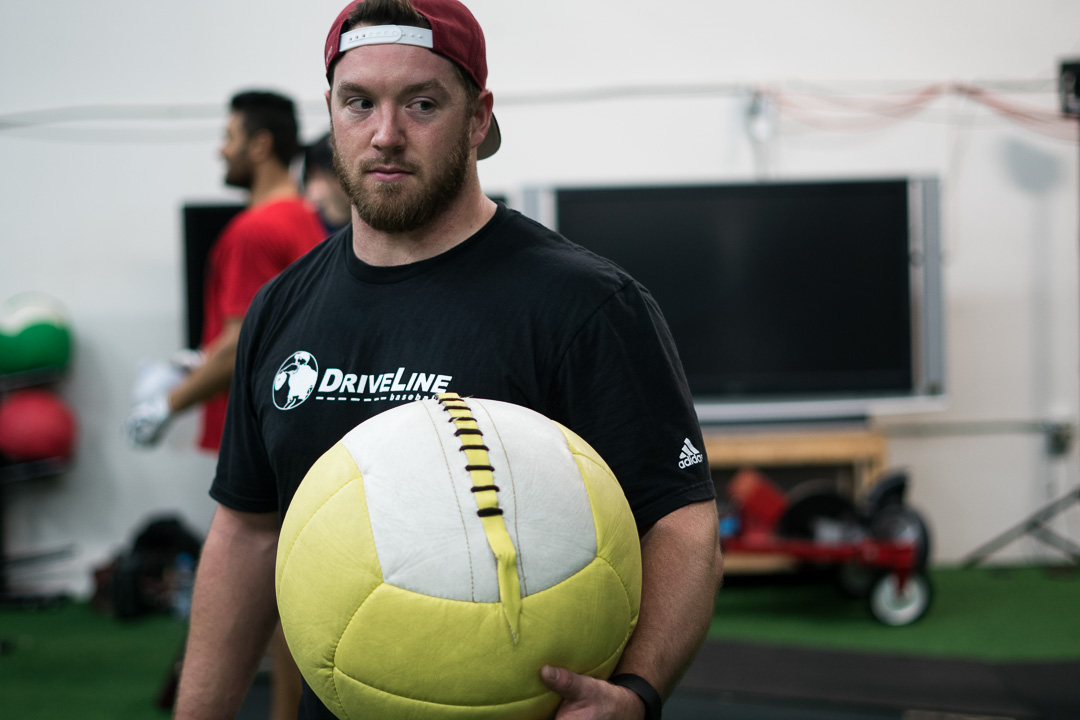
Sample Programming for VBT in Baseball
Our periodization model for VBT is a progressive overload in which the athlete tries to add weight to the bar between sets or from week to week. This allows for constant increases in power production so we can get the greatest benefit from that day. It is imperative that the weights are picked wisely: They need to be hitting the velocity that you have selected. We also use the autoregulation technique that I discussed earlier.
Here is an example program for someone who is just starting to enter a VBT program. These are just the major lifts; I will not add in the assistance work because this depends on an athlete’s needs.
Week 1:
Monday: Max Effort
Back squat: 65% 5 reps, 75% 5 reps, 85% 5+ reps
Deadlift: 65% 5 reps, 75% 5 reps, 85% 5+ reps
Speed bench press: 8-12 sets of 2 reps. 0.8-0.9 m/sec
Wednesday: Dynamic effort
Speed back squat: 8-12 sets of 2 reps. 0.8-0.9 m/sec
Speed deadlift: 8-12 sets of 2 reps. 0.8-0.9 m/sec
Friday: Speed/max effort
Trap bar jump: 8-12 sets of 2 reps. 1.35-1.5 m/sec
Bench press: 65% 5 reps, 75% 5 reps, 85% 5+ reps
Week 2:
Monday: Max Effort
Back squat: 70% 3 reps, 80% 3 reps, 90% 3+ reps
Deadlift: 70% 3 reps, 80% 3 reps, 90% 3+ reps
Speed bench press: 8-12 sets of 2 reps. 0.8-0.9 m/sec
Wednesday: Dynamic effort
Speed back squat: 8-12 sets of 2 reps. 0.8-0.9 m/sec
Speed deadlift: 8-12 sets of 2 reps. 0.8-0.9 m/sec
Friday: Speed/max effort
Trap bar jump: 8-12 sets of 2 reps. 1.35-1.5 m/sec
Bench press: 70% 3 reps, 80% 3 reps, 90% 3+ reps
Week 3:
Monday: Max Effort
Back squat: 75% 5 reps, 85% 3 reps, 95% 1+ reps
Deadlift: 75% 5 reps, 85% 3 reps, 95% 1+ reps
Speed bench press: 8-12 sets of 2 reps. 0.8-0.9 m/sec
Wednesday: Dynamic effort
Speed back squat: 8-12 sets of 2 reps. 0.8-0.9 m/sec
Speed deadlift: 8-12 sets of 2 reps. 0.8-0.9 m/sec
Friday: Speed/max effort
Trap bar jump: 8-12 sets of 2 reps. 1.35-1.5 m/sec
Bench press: 75% 5 reps, 85% 3 reps, 95% 1+ rep
Week 4:
Monday: Max effort
Back squat: 40% 5 reps, 50% 5 reps, 60% 5 reps
Deadlift: 40% 5 reps, 50% 5 reps, 60% 5 reps
Speed bench press: 4 sets of 2 reps. 1.00 m/sec
Wednesday: Dynamic effort
Speed back squat: 4 sets of 2 reps. 1.00 m/sec
Speed deadlift: 4 sets of 2 reps. 1.00 m/sec
Friday: Speed/max effort
Trap bar jump: 4 sets of 2 reps. 1.35-1.5 m/sec
Bench press: 40% 5 reps, 50% 5 reps, 60% 5 reps
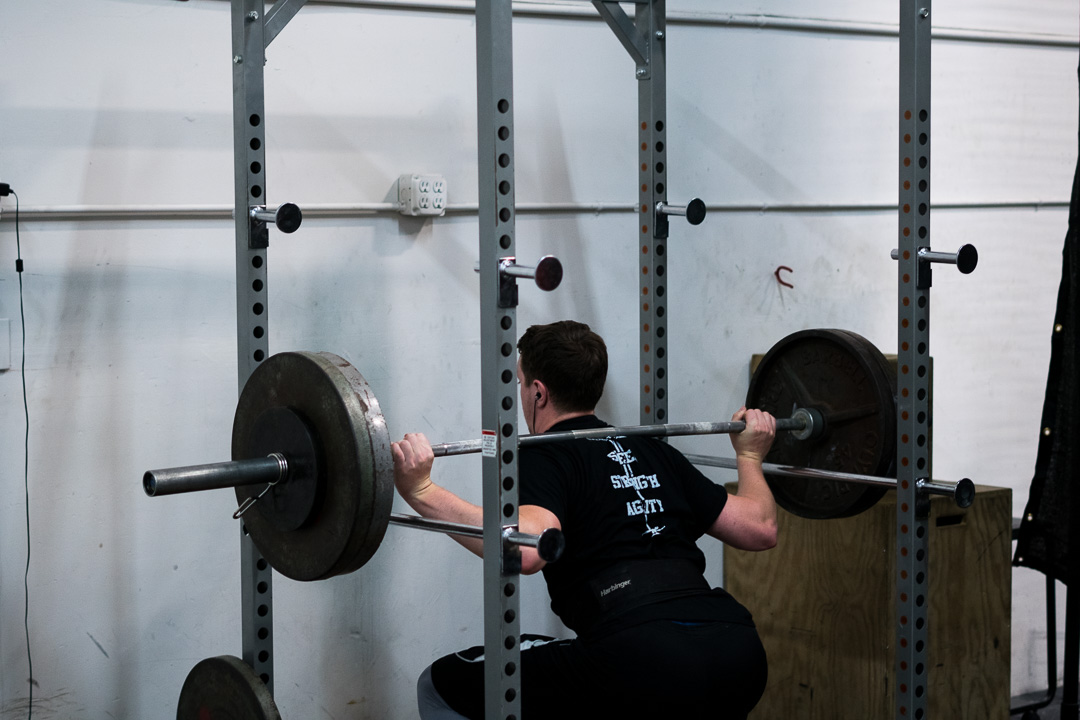
The main goal here is to rest and recover from the last cycle. Ideally this deload will also happen during a throwing deload for proper recovery. Here, you should lower the volume of the speed lift and the intensity on the max effort days.
A fuller discussion and exploration of velocity-based training for baseball athletes could take up tens of thousands of more words based on programming cycles – but hopefully this was a good primer for understanding how we are data-driven in all forms of training at Driveline Baseball, not just on the throwing side!
Comment section
Add a Comment
You must be logged in to post a comment.
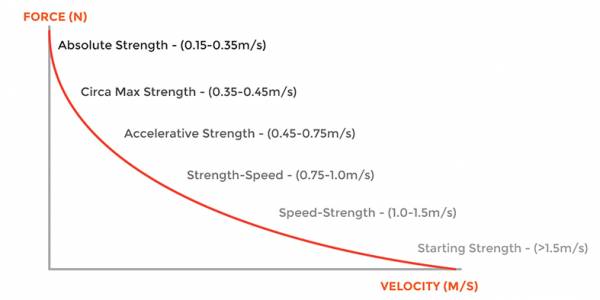


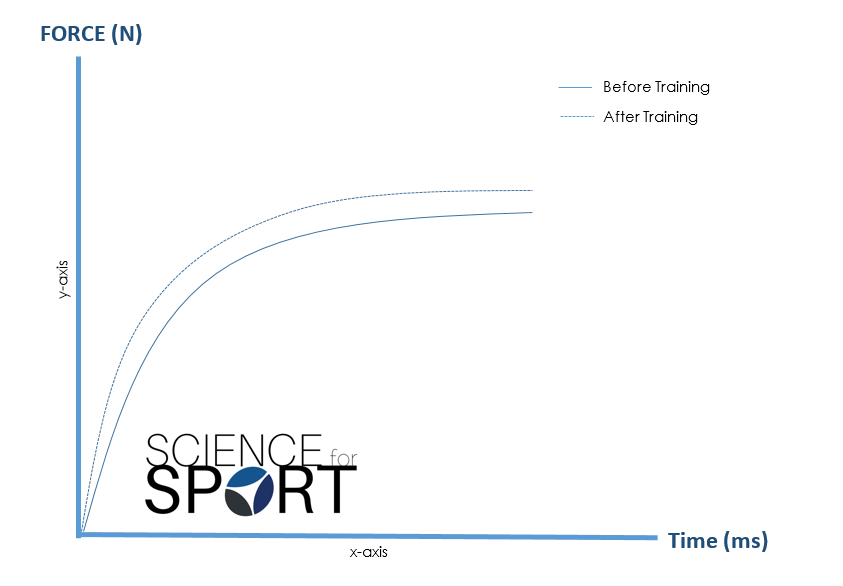
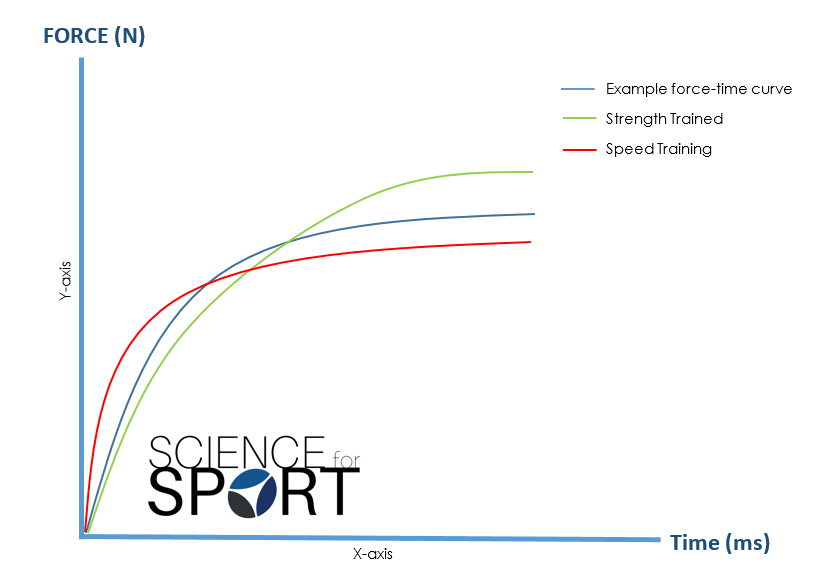
Momentum and Arm Action: Myths, Misunderstandings -
[…] injure the human body. This is the theory behind using wrist weights, heavy plyometric balls, and sport-specific lifting exercises in the weight room to not only increase endurance of the muscles that help protect the […]
Baseball’s Top Staffs Have Come Around On The High-Spin Fastball – DAILY MOTO NEWS -
[…] spin rate, but it’s difficult to throw a fastball differently. Unlike velocity, which can be trained, a pitcher’s fastball spin ratio is thought to be extremely difficult to alter […]
Baseball’s Top Staffs Have Come Around On The High-Spin Fastball – Sport News 365 -
[…] spin rate, but it’s difficult to throw a fastball differently. Unlike velocity, which can be trained, a pitcher’s fastball spin ratio is thought to be extremely difficult to alter […]
Brett -
When would you use single leg lifts in the program? Are they part of this program or is it just the main 3 lifts. For example, I usually add split squat and a few others, so which day would I do the single leg exercises?
Driveline Baseball -
Brett- Generally, it will be those 3 main lifts. You could use split squats in place of squats, which we have done. One issue we see with this is athletes compensating form for speed. You will see the back arch out as they are trying to move the bar as fast as possible. You can always use some additional exercises that focus on single leg range of motion and stability.
Reep Claribel -
Thank You for your information.